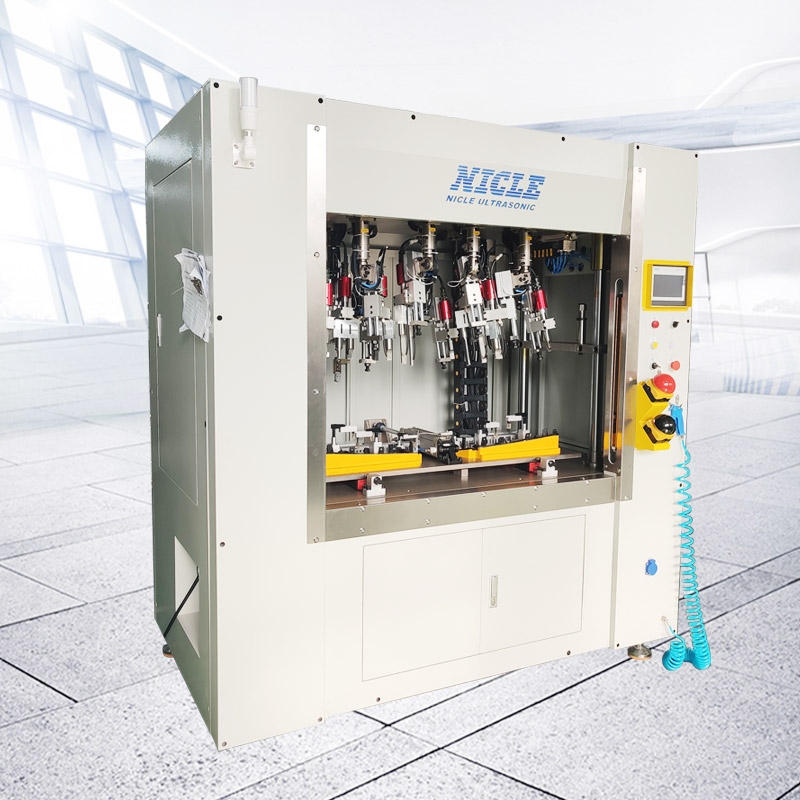In industries where precision, cleanliness, and consistency are mandatory—like medical device production or pharmaceutical packaging—ultrasonic welder machine manufacturing faces stricter standards than conventional builds. Unlike standard ultrasonic welders, those designed for cleanroom and medical-grade environments must meet additional technical, material, and regulatory requirements. This article explores what sets these specialised builds apart and what you should look for when sourcing or manufacturing them.
Why Cleanroom Standards Matter in Welding Equipment
Cleanrooms are controlled environments where airborne particles, humidity, and temperature are tightly regulated. Any machinery used in this setting must avoid introducing contaminants. Ultrasonic welders, which join thermoplastics using high-frequency vibrations, are commonly used in medical and pharmaceutical manufacturing. But without proper safeguards, they can pose risks:
-
Off-gassing from incompatible materials
-
Dust generation from mechanical parts
-
Contamination from lubricants or exposed electronics
These risks demand a machine that’s designed from the ground up for cleanroom use—not simply adapted post-production.
Design Considerations Unique to Cleanroom Welders
Ultrasonic welders for cleanrooms and medical use require more than surface-level tweaks. Here’s what differentiates them:
1. Material Selection
-
Only ISO 10993 or USP Class VI compliant materials are acceptable for any component that might contact product.
-
Anodised aluminium, medical-grade stainless steel, and PEEK plastics are common choices.
-
Seals and gaskets must be made from non-shedding, chemical-resistant materials like EPDM or silicone.
2. Enclosure and Containment
-
Welders must be fully enclosed with smooth, cleanable surfaces.
-
Designs exclude fans or vents that may disrupt airflow or generate particles.
-
Doors and panels should be sealed and easy to disinfect.
3. Lubrication-Free Components
-
Bearings, actuators, and linear guides must use dry or solid lubrication.
-
Pneumatics and other moving parts are often contained in sealed chambers to prevent outgassing or particle release.
4. Cable and Wiring Management
-
Cables are routed through sealed conduits or tight grommets.
-
Teflon-jacketed cables are preferred for their chemical resistance and non-shedding properties.
-
Electrical enclosures must be rated IP65 or better.
Regulatory and Compliance Challenges
Any welding equipment used to manufacture or package medical devices must comply with applicable regulatory frameworks, including:
-
FDA CFR 21 Part 820 for device manufacturing
-
ISO 13485 for quality management systems
-
CE marking where applicable
Ultrasonic welding systems must also support validation protocols, including:
-
IQ/OQ/PQ (Installation, Operational, Performance Qualification)
-
Traceable process parameters and data logging
-
Repeatability within tight tolerances (often ±0.01 mm)
Failure to meet these can result in rejected batches or even product recalls.
Integration Into Automated Lines
Cleanroom ultrasonic welders aren’t always standalone systems. Increasingly, they’re part of larger automated lines—blister packers, catheter assembly systems, and IV bag welders. That brings extra challenges:
-
Machine must interface with upstream and downstream systems without introducing contamination.
-
Remote control and monitoring should be possible through sealed HMIs or external PLC integration.
-
Non-contact sensors, such as optical or laser types, are used instead of mechanical switches.
Cleaning and Maintenance Protocols
Any downtime in medical production is costly. Welders must be easy to clean and maintain without breaching cleanroom protocols:
-
Tool-free access for head removal or sonotrode changes
-
Surfaces angled for fluid runoff to prevent pooling
-
Software lockouts to prevent unauthorised parameter changes
Regular preventive maintenance also includes recalibration, filter changes (if applicable), and surface integrity checks—all of which must be documented.
Mistakes to Avoid When Selecting a Cleanroom Welder
When sourcing ultrasonic welding machines for these applications, there are common pitfalls:
-
Buying standard welders and retrofitting later – These often lack proper sealing, compatibility, or material traceability.
-
Ignoring documentation – If the vendor can’t provide full validation and testing documentation, it won’t pass audit.
-
Overlooking after-sales support – Cleanroom equipment failures can’t be solved with generic fixes. Support teams must understand regulatory impact and work within tight timelines.
The Bottom Line
Choosing or building ultrasonic welders for cleanroom and medical-grade applications involves more than performance specs. It’s about contamination control, regulatory compliance, material safety, and long-term traceability.
If you’re involved in manufacturing equipment for cleanroom or medical production, focus on full lifecycle suitability—not just mechanical performance. Machines should be designed, built, and validated to perform in a zero-tolerance environment.






